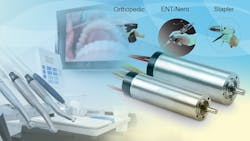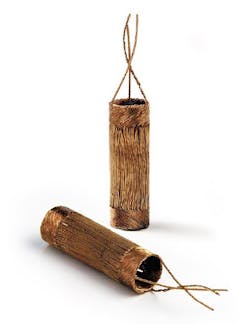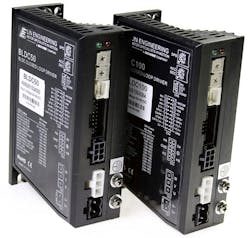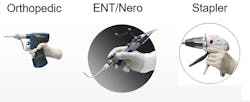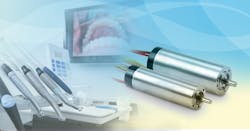The Advantages of Slotless Motors over Standard BLDC Motors
Slotless motors have gone through innovations in design as well as manufacturing, making them a good choice for many. Here’s a look at the benefits and drawbacks of slotless motors and the background information that should help when deciding whether to use them or not.
Slotted vs. Slotless
Slotted motors have copper wires wound through slots that keep the motor’s rotor turning when energized. As the rotor’s magnet passes these slots (also known as teeth), there is a greater attraction to the iron at the ends of the slots than to the air gaps between them. This causes an uneven magnetic pull known as cogging. As a motor slows, cogging increases as the magnet “snaps” from one iron segment to the next. This motion can also create torque ripple—a loss in efficiency, vibration and noise.
Slotless motors have no air gaps since there are no slots, and therefore have a continuous back iron geometry. This eliminates cogging, so the motors run smoother at all speeds but most noticeably at slower speeds where slotted motors magnify cogging. Any application needing a motor turning slower than 500 rpm would likely benefit from using a slotless motor.
In addition, the lack of the protruding iron segments (salient poles) lets the motor operate with less susceptibility to saturation (low peak flux density). With the slotless motor’s reduced amount of iron, it can operate at lower temperatures or an increase in operating frequency, since the thermal function of the motor is better balanced.
Further, torque exerted during the detent generated by a slotted motor creates noise. Removing the slots drastically reduces this detent torque which greatly reduces the noise created by the motor. In some cases, noise is lowered to less than 35 dB.
Slotless motors also create less electromagnetic interference, allowing for high speeds and quick accelerations. Engineers discovered that if a slotless motor is designed to have a sinusoidal torque output that produces negligible distortion (over trapezoidal voltage output), it would significantly cut torque ripple particularly when also used with a sinusoidal driver. Because slotless motors have no stator teeth or detent torque, they exhibit low magnetic saturation, which lets them operate at several times their rated power for a while.
Engineers have also learned that putting high-energy, rare-earth magnets such as samarium-cobalt and neodymium-iron-boron, in slotless motors gives them the same or greater torque performance than slotted motors. The combination of rare-earth magnets and the fewer coils needed in slotless motors means low electrical resistance, inductance and static friction, as well as high thermal efficiencies. This means the motors run cooler even at high speeds up to 50,000 rpm.
Modular Design
Companies on the forefront of motor design have taken slotless motor design to its limits. For example, the modular design of slotless motors lets motor manufacturers combine their components with the gearhead to match nearly any application’s speed and torque requirements. Companies such as Lin Engineering offer slotless BLDC (brushless dc) motors with a variety of windings that let them match designers’ specification needs. Motors can also be customized with sensors, such as optical or hall sensors for accurate positioning and directional feedback and control velocity.
Modular design means an array of options are available beyond just specification-oriented customer needs. For example, custom connectors and cables can be ordered, shaft modifications such as pulleys and gears can be machined to specifications, and special bearings and windings can be incorporated depending on the application needs.
The word of caution when selecting the right motor is to fully understand the application’s needs. Slotless motors have come a long way in their design and capabilities, but it still takes a thorough understanding of the application’s needs. There are too many variables in any application for there to be a one-size-fits-all solution. Fortunately, there is modularity.
Some applications that would benefit from considering a slotless motor design include robotic grippers and claws, including those used in medical and surgical tools (whether manually or automated). They are also a good choice for miniature pumps and respirators, as well as semiconductor handlers and test-and-measurement equipment.
Medical products and devices are a particular industry where vibration and cogging can be an issue. For precise control in machines that pump fluids into delicate areas such as the eyes, or for use in medical imaging systems, slotless motors are ideal. Another application would be aircraft control systems where smooth feedback control helps a pilot make cockpit decisions. Reduced vibration and noise are also important in handheld production tools, as well as scanners, data storage and other applications where cogging might cause sensitivity problems.
The most encouraging news for engineers considering slotless motors for their applications is that their costs are in line with slotted motor costs.
When cogging is an issue, slotless motors remain the best choice.
Bart Pichola is a marketing manager at Lin Engineering.
